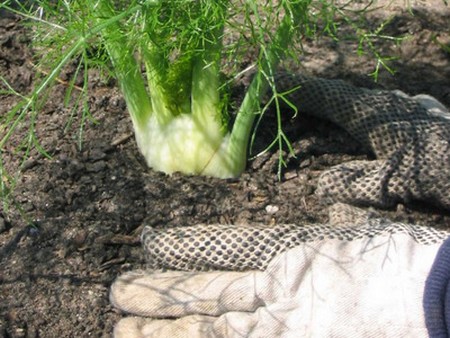These two unusual vegetables are rarely seen on the vegetable patch but are appreciated in the kitchen for their distinctive flavor.
Florence fennel is a type of fennel bred for its fleshy stem base. The feathery foliage is an attractive addition in the ornamental border. It has a subtle aniseed flavor and can be eaten raw, casseroled or braised.
Celeriac is a close relative of celery, with a thickened stem base which is edible. It is easier to grow than traditional trench celery but requires the same rich, moist, organic soil to thrive. It prefers a cool, damp climate.
Calendar – Florence Fennel
Under ideal conditions – rich, moisture-retentive soil, regular watering and a Mediterranean climate – Florence fennel will grow rapidly, producing a ‘bulb’ in 10-12 weeks. In the UK climate, it is best to sow after late June. It is liable to bolt if sown too early or in a cold summer.
April-May
For a summer crop, sow a couple of seeds per 7-cm pot. Plant the young seedlings when they have two pairs of leaves, 30cm apart. Florence fennel dislikes being planted out when it is larger (i.e. once a rootball has formed). Keep the area well weeded and well watered to promote rapid growth.
June-July
For autumn crops, sow the seed directly into a well-prepared seedbed and water thoroughly if the soil is dry. Germination can be erratic, but the seedlings will not suffer a check to their growth by being transplanted. Thin to 30cm apart. Keep the area well watered and weeded to promote rapid growth. When the stem base starts to swell, you can pile up soil around the stem to make it whiter, although this is not essential.
Calendar – Celeriac
February-March
Sow the seed in seed trays in gentle heat (12°C or less), then grow on in a greenhouse. The seed needs light to germinate so scatter it on the compost surface and do not cover it. Keep the compost moist by covering the trays with a sheet of glass.
April
Harden off the young plants carefully in a coldframe or a sheltered spot outside.
May
Plant out into their final position when they are about 5-8cm high. Give each plant a space of 30cm in diameter or plant 30cm apart each way.
June-September
Mulch between the plants with a 15-cm layer of old straw or well-rotted compost to help conserve moisture. Water well in dry spells and give a high-nitrogen feed from time to time during the summer. Remove the lower leaves later in the summer to help the roots swell.
October
Lift the large knobbly roots for storage.
